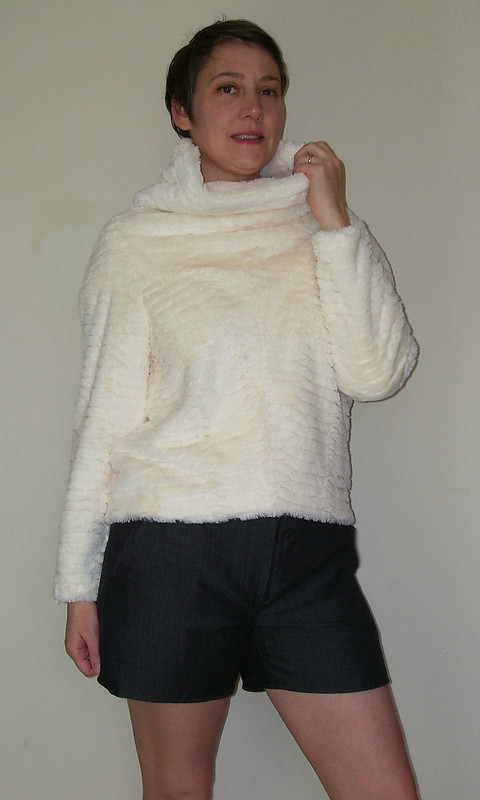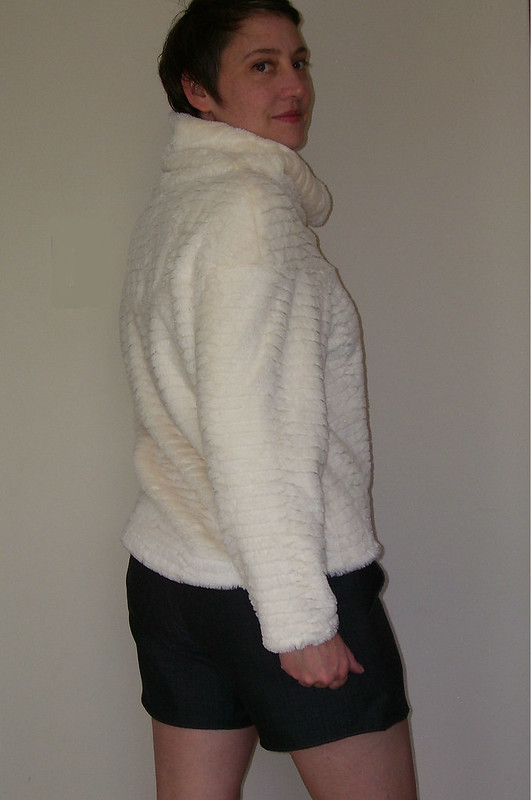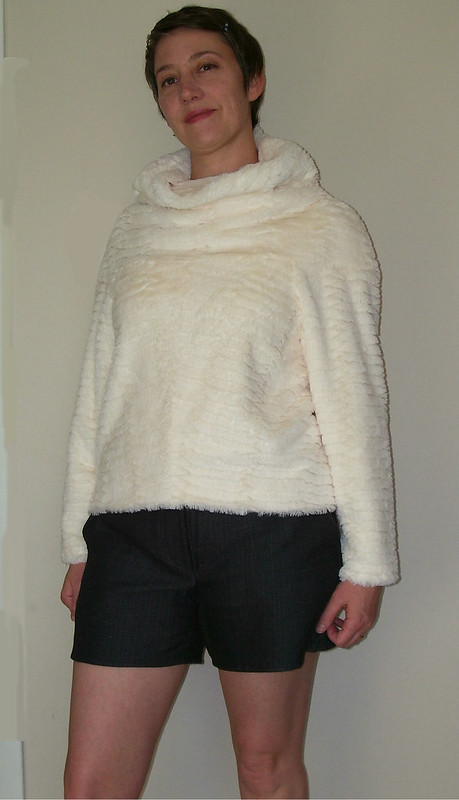Well, I got sucked in by Burdastyle‘s modern aesthetic again, despite knowing I’d have little help from them to get it done. Their directions are wanting. Thankfully this is easy to sew.
Take a look at this beauty…

So chunky, so luxurious. And such an inaccurate representation of the top. Look at how much of the sweater is clipped up on her back, behind her elbow.
Muslin time for sure. I started with my size, 38, based on my 35.5in bust. The result is the refrigerator box of boxy tops. And what’s up with the seam line placement going across the bust? That’s just strange to me. Alteration time.

First up, I raised the bust line seam by 1in on all pieces.

The pattern has shaping to curve over your shoulder. These points were about 2in past my shoulder on each side, so I used that and the ease around my chest as indicators of how much I could bring the pattern in. I cut my pattern pieces down to the smallest size along the side seams of the bodice, sides of the cowl, and the arm seam. On top of that, I folded out/removed a total of 2in vertically from the center of the front, back and cowl neck pieces. On the sleeve, I slashed the pattern piece up the middle from cuff to (not through) the seam line at the shoulder. I overlapped the cuff part of the slash by 1/2, removing 1in total, and taped up the skinnier sleeve piece.

After finishing up my faux leather jacket and surviving, I thought I really wanted to go luxe on this project and try some faux fur. I added a lining because while the faux fur is so silky and soft, it is supported by a web-like substraight that I didn’t like against my skin. I did a hybrid of underlining and lining using a ponte from my stash. I hand stitched the hems and catch stitched the interior seam allowances open after trimming away a bit of the fur.

This sweater is Warm, which is just what I wanted. There’s still some winter left to enjoy the coziness of this sweater. Don’t be fooled by my modeling in my Charcoal shorts and Jade skirt.

Things to note if you make this sweater:
I’m a shorty (5’4″) and the front hem line falls a couple inches below my navel.

Unless you make this really big, you should expect your sweater to lift up if you raise your arms higher than shoulder level. Hopefully looking at how the shoulders and arms go together in the line drawing and on my muslin sheds some light on why.

I’m feeling pretty good about my warm wardrobe options now. It’s time to look toward spring and get sewing.
So, what do you think, did I overcorrect? I feel like I lost some of the boxy look, especially in the cowl.
Burdastyle 10/2015 #109 made in fur with a lining should take you about 4 hours to complete. (Add more time if you choose to catch stitch your seam allowances)
Pattern: $6 Fabrics: $25 Total: $31








































